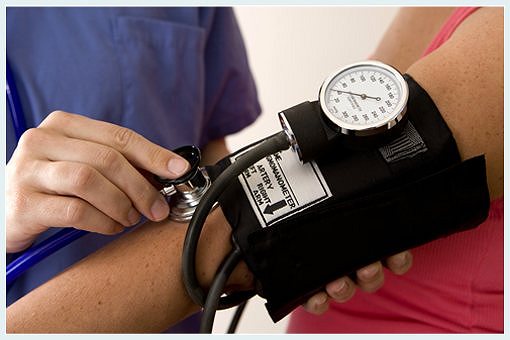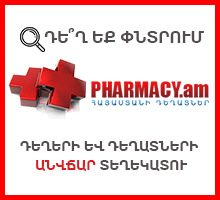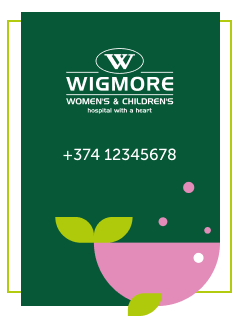Normal or optimal blood pressure (BP) is defined as the level above which minimal vascular damage occurs. There is a continuous, consistent, and independent relationship between elevated BP and risk of cardiovascular events. This was clearly demonstrated in a meta-analysis that included 1,000,000 individuals with no history of vascular disease. Among this group, during 12.7 million person-years at risk, there were about 56000 deaths categorized as vascular in origin (12000 stroke, 34000 ischemic heart disease, and 10000 “other vascular”) and 66000 other deaths at ages 40-89 years. Results from this study demonstrated that a BP level lower than 115/75 mmHg appears to better define optimal BP. According to the Joint National Committee 7 (JNC 7), hypertension is defined as physician office systolic BP level of ≥140mmHg and diastolic BP of ≥90mmHg. The JNC 7 defines normal BP as a systolic BP <120mmHg and diastolic BP <80mmHg. The gray area between systolic BP of 120-139 mmHg and diastolic BP of 80-89 mmHg is defined as “prehypertension.”
One in 3 Americans over the age of 18 years suffers from hypertension. The prevalence is higher among older individuals, women and non-Hispanic blacks. Despite the increase in prevalence, recent data from the National Health and Nutrition Examination Survey (NHANES) demonstrate an improvement in blood pressure control (50%) among Americans with hypertension. However, the blood pressure control rate remains suboptimal in people who have serious comorbid conditions such as chronic kidney disease. In a survey of patients with chronic kidney disease, BP control was found to be just 13.2%. On a global level, hypertension is a greater problem, with 13.5% of all deaths attributed to BP-related diseases. Individuals in lower economic strata are disproportionately afflicted with hypertension.
The prevalence of hypertension increases progressively with age. Results from the Framingham study demonstrate that among middle-aged and elderly persons, the residual lifetime risk of developing hypertension is 90%. In the majority of patients (95%), hypertension is primary or idiopathic; there is no identifiable risk factor. The remainder of these patients have hypertension caused by renovascular disease, primary aldosteronism, etc.
The role of altered salt excretion by the kidney as a central mechanism in the development of hypertension was proposed by Arthur C. Guyton. According to Dr. Guyton's hypothesis, there is impaired excretion of sodium ions by tubular epithelial cells in the kidney. To maintain salt and water homoeostasis, the body adopts a pressure-natriuresis approach that ultimately leads to an elevation in BP. Animal studies and studies evaluating Mendelian forms of syndromes that manifest as hypertension and hypotension, such as Bartter's syndrome and Liddle's syndrome, have provided insight into the pathophysiology of hypertension. These data confirm that the basic problem in conditions leading to alteration in BP lies in the genetic alteration of sodium transport in renal epithelial cells. Several factors including aging, sympathetic overactivity, toxins, and a low nephron number have been proposed as factors that could ultimately damage the renal tubules and alter epithelial cells, resulting in defective sodium excretion.
In addition, several new conditions that can cause hypertension have been identified. The metabolic syndrome, with insulin resistance and elevation in insulin levels, leads to increased sympathetic activity and hypertension. In patients with obstructive sleep apnea, activation of the sympathetic and renin angiotensin systems has been defined as a possible mechanism for elevation in BP.
Careful measurement of BP should be an integral part of any physical examination in a physician's office. Because inaccuracies in blood pressure measurement can occur frequently in clinical practice, the following guidelines should be followed when measuring a patient's BP. The patient should be seated comfortably with the back supported and the upper arm bared without constrictive clothing. The legs should not be crossed. The arm should be supported at the level of the heart, and the bladder of the BP cuff should encircle at least 80% of the arm circumference. The blood pressure measuring device should be deflated at the rate of 2 to 3 mm/sec, and the first and last audible sounds should be taken as the systolic and diastolic pressure respectively. Neither the patient nor the observer should talk during the measurement.
In addition to office BP measurements, 24-hour ambulatory BP monitoring and home BP monitoring are now acceptable methods for evaluating BP more comprehensively on an individual basis. A mean (average) 24 hour BP of ≥130/80 mmHg is regarded as elevated blood pressure.
The recently released National Institute of Health and Clinical Excellence (NICE) guidelines published in the United Kingdom recommend that a diagnosis of primary hypertension should be confirmed with 24-hour ambulatory blood pressure monitoring or home blood pressure monitoring rather than by relying solely on office blood pressure measurement. Twenty-four-hour ambulatory BP monitoring is indicated to rule out white-coat hypertension, to uncover apparent drug resistance (office resistance), to better define resistant hypertension, to identify hypotensive symptoms while the patient is being treated with anti-hypertensive medications, to monitor episodic hypertension, and to identify autonomic dysfunction states. Twenty-four-hour ambulatory BP monitoring also helps identify abnormal patterns in blood pressure that could remain undetected if a patient is evaluated based on physician office blood pressure measurements alone.
Several prospective trials have demonstrated that home BP is a better predictor of cardiovascular morbidity and mortality than are office BP measurements. Based on these data, the first home BP monitoring guidelines endorsed by national societies, including the American Heart Association (AHA) and American Society of Hypertension (ASH), among others, have been published.
These home BP measurement guidelines recommend that a validated device be used to measure BP at home. Blood pressure measurements using such validated devices should be taken before an office visit, with at least 2 morning and 2 evening readings everyday for 1 week (but discarding the readings of the first day), which gives a total of 12 BP readings over a week, based on which clinical decisions can be made. Hypertension is defined as a mean home blood pressure of ≥135/85 mmHg. Home blood pressure monitoring provides an inexpensive alternative to 24-hour ambulatory BP monitoring which is not yet widely available. One of the main drawbacks in home blood pressure measurement when compared to 24-hour ambulatory BP monitoring, is that sleep time blood pressures cannot be recorded and therefore those patients with abnormal dipping pattern in blood pressure and nocturnal hypertension will be missed.

















